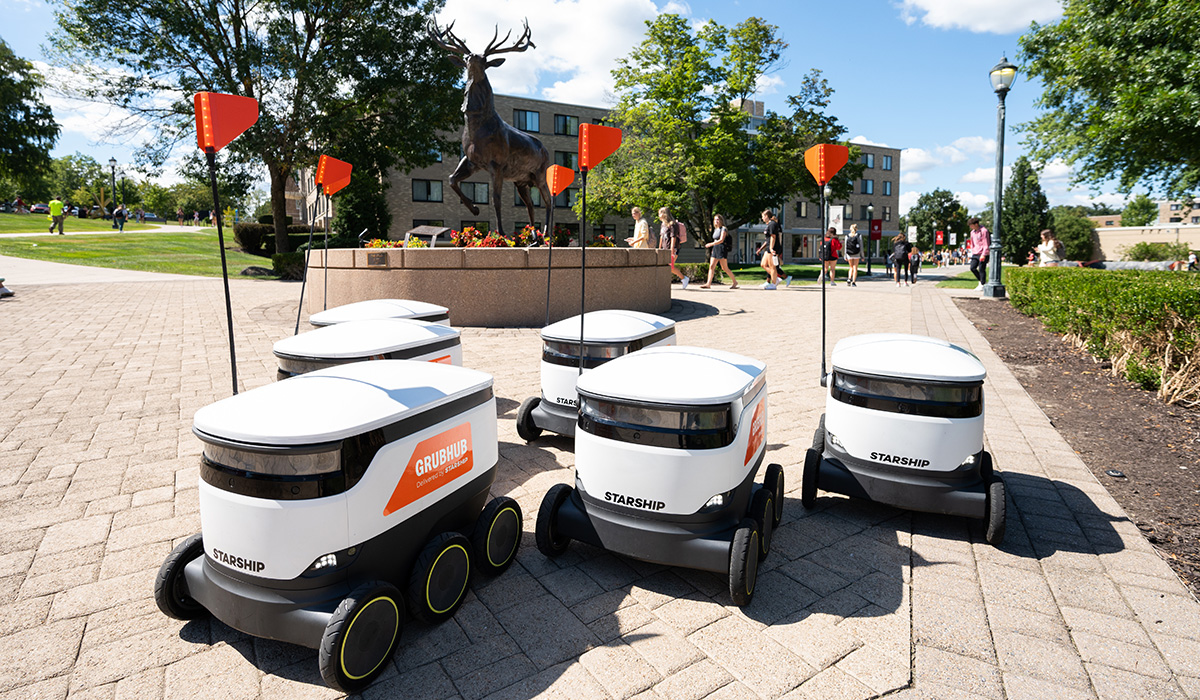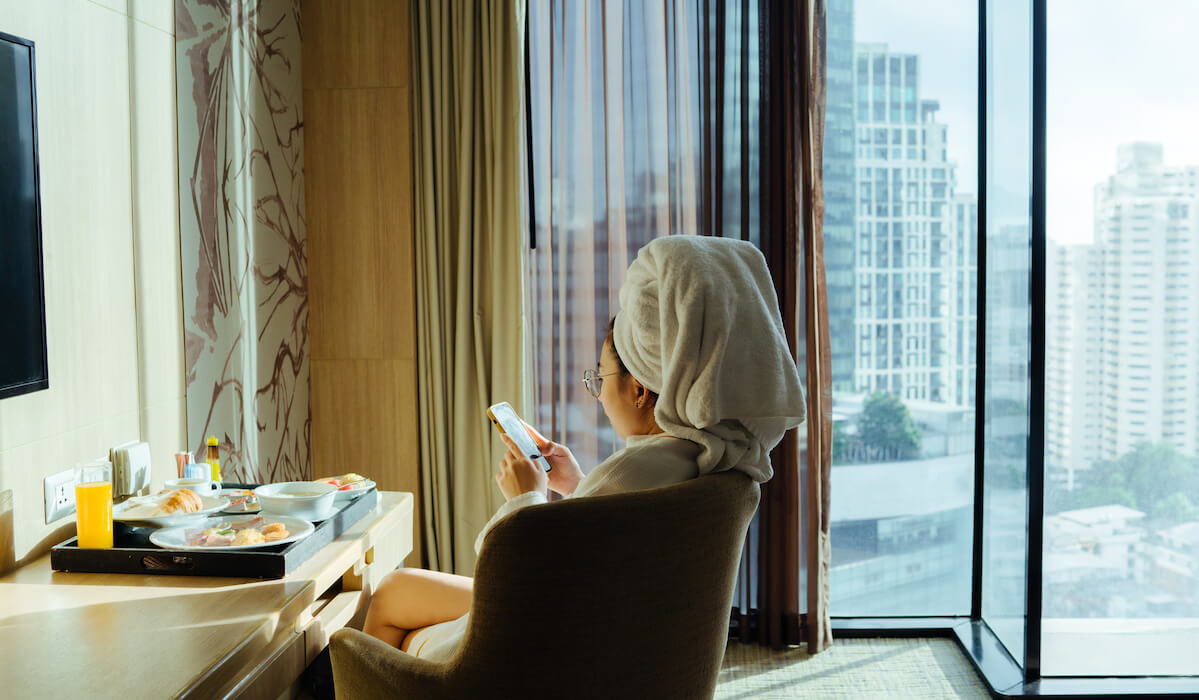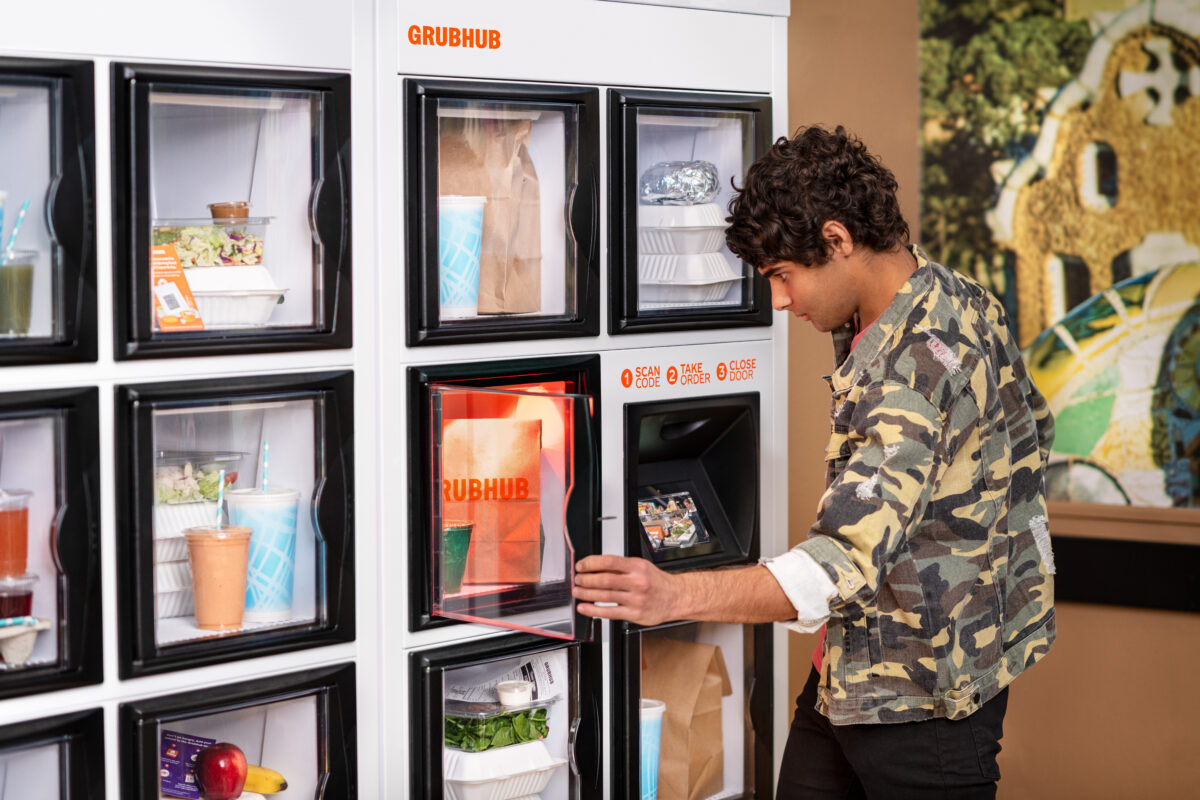Imagine yourself as a university student dashing across a quad before your next class. You have just enough time to take a detour and grab a bite to eat — but then disaster strikes. You round the corner and feel your heart sink into your empty stomach. The line into the cafe is out the door.
Long lines are enough to turn away even the hungriest of college students. On top of their massive workload and busy class schedules, many people simply don’t have the time to wait in line. Even worse, experiences like this can drive them to seek other food options.
Fortunately, we’re here to help. In this guide, we’ll take a closer look at what’s causing lines to pile up for campus dining and what your university can do to streamline the campus dining experience.
Long lines, labor shortages and student satisfaction
Looking across the country, it’s plain to see that college enrollment has been on a decline lately. Yet, as Inside Higher Ed reports, universities are still struggling to manage increasingly long lines at their on-campus dining locations.
From California to Michigan to Rhode Island, college students left and right are growing tired of waiting for their food. So, what’s to blame for this problem in the first place?
Few choices on campus
One significant reason why wait times are rising is because of a lack of choices on many college campuses. Students may not find campus options that satisfy their tastes and dietary habits. With few dining options that cater to specific diets — vegan and halal for example — it can be difficult for some students to make the most of their allotted meal plan. Consequently, groups of students tend to choose one venue over another, concentrating a high volume of foot traffic into a single establishment.
To make matters worse, many universities closed down some dining options during the pandemic when on-campus populations were minimal. Although many have recovered, some schools still rely on a limited number of campus locations to carry the bulk of student demand. This can cause massive lines to build up at peak times especially at specialty stations or venues.
Lingering labor shortages
Labor shortages have been a major byproduct of the pandemic that industries of all shapes and sizes are still experiencing. When employees started quitting their jobs in droves in 2021 — a phenomenon that’s now known as the Great Resignation — the already significant labor problem became even bigger, especially for the food service industry.
More workers quit their jobs in the foodservice sector than any other in the United States. In fact, during the 6-month period between October 2021 and March 2022, unfilled openings in the hospitality sector exceeded total hires by roughly 500,000. Even today, many campus dining departments still struggle to hire food service workers to fill in the gaps of their dining program.
How waiting impacts student satisfaction
With fewer employees on staff and many hungry students looking for food, back-of house inevitably slows down as workers struggle to manage the increasingly heavy workload. This adds unnecessary stress in the kitchen, which can lead to employee burnout and increased turnover.
Meanwhile, as establishments scramble to keep up with the pace of demand, employees are more likely to make mistakes or cut corners in the kitchen. On some campuses, students have noticed a decline in the quality of food their dining halls are serving. Even worse, this can lead to poor food safety outcomes, such as undercooked food or mislabeled items.
What’s also important is the act of standing in line itself. Waiting a long time for service is a bad experience for students and can drive away their business, which reduces on-campus revenue. A study by the American Customer Satisfaction Index found that wait times are a top driver of customer satisfaction. In fact, customers who wait longer than expected are 18% less satisfied with their experience.
But that dissatisfaction doesn’t just disappear — it lingers. Customers (or students and their parents) tend to remember the experience long after the fact, and are likely to share their dissatisfaction with others.
5 ways to streamline on-campus dining and keep students happy
As student expectations change, it’s important to provide an exceptional dining experience. The good news? There’s plenty you can do to reduce long lines, increase student satisfaction and deliver top-notch food to your students.
1. Mobile ordering
One of the biggest complaints about standing in line is how long it takes just to place your order. Why not take the pain out of ordering and offer students a more convenient option? That’s what mobile ordering is all about.
With the ability to order from your on-campus dining locations from the palm of their hand, students can easily place an order on the go. Better yet, they don’t have to wait in line as they can simply pick up their prepaid orders whenever they’re ready — no staff interaction required.
Many campuses are using mobile ordering from a student’s own phone to reduce the dependency on cashier staffing as well. Students place their orders with the point-of-sale system in their pocket — their smartphone!
2. Self-service kiosks
Take the burden of operating the register off your workers by leveraging an easy-to-use self-service kiosk. Students simply walk up to the kiosk, input their order and swipe their campus or credit card.
Not only does this free up staff to focus on preparing delicious meals and maintaining food safety, it also reduces your overhead costs. Why? Because you don’t have someone at the register taking orders. Plus, with more hands helping in the back of the house, you can help keep locations open and operating efficiently.
3. Smart lockers
Once they’ve ordered on their mobile phones, students can quickly pick up meals using on-campus smart lockers. This can be a fast, convenient and contactless option for students in a hurry. With both front and rear loading options, lockers are also a great way to reduce congestion at popular dining locations or minimize the amount of labor needed to deliver orders to students.
4. Robot delivery
Step into the future and leverage the power of self-driving robots. When orders are placed, prepared and ready to go, they’re loaded into a robot that self drives to the drop-off location. These robots streamline delivery and offer a convenient alternative to walking across a crowded campus. They also give you the ability to deliver food to hard-to-reach or underserved campus locations, not to mention provide a service more and more students are now asking for from their campuses.
5. Off-campus delivery
Allowing students to spend their dining or flex dollars and/or flex money off campus is a great way to decrease congestion at overburdened facilities on campus. Plus, when you partner with Grubhub, you can earn a commission on every off-campus order for additional revenue.
But what’s more important is that off-campus restaurants help diversify dining options for students, especially late at night when many on-campus locations are closed.
Elevate on-campus dining with Grubhub
When it comes to managing the modern needs of university dining, you need more than just a technology provider. You need a partner.
That’s why Grubhub works alongside universities to identify the right solutions for their specific needs. From delivery to mobile ordering and everything in between, we streamline your operations and take you to the next level.
So, what’re you waiting for? Contact our team to learn more about bringing Grubhub to your campus today.




